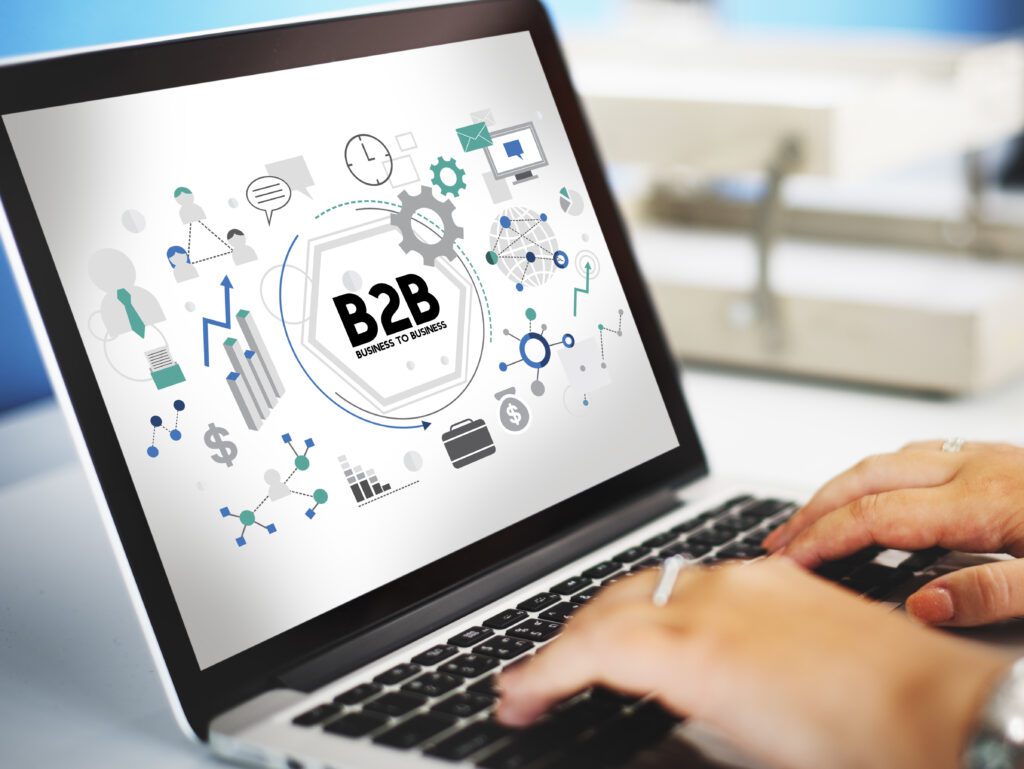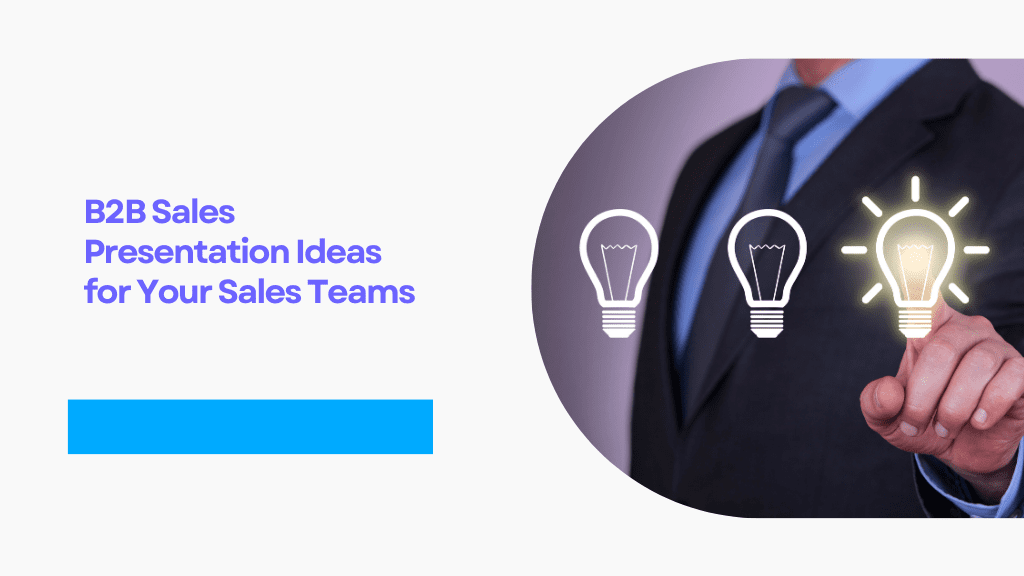Presentations are a great way to share information with a group of people, and they’re one of the most effective tools in your salesperson’s arsenal when it comes to closing deals. However, not all presentations are created equal. If your sales team relies on presentations as their primary method of communication with prospects, then you need to ensure that they’re delivering engaging content and achieving results.
Here are some tips for improving your B2B sales teams’ pitch decks:
The Power of Visual Storytelling
Visual storytelling is a powerful tool that can be used to engage your audience and drive home your message. It’s not just about putting up slides with pretty pictures; it’s about using visuals to tell a story that resonates with your audience.
- Infographics and other data-driven graphics make it easy for you to present complex information in an engaging way. Having charts and graphs on hand is a must for any presentation, especially if you’re trying to explain something complicated like ROI or sales goals for the year.
- Videos are another great way of conveying information visually, whether they’re short videos explaining how something works (like how our software works) or longer videos showcasing customer testimonials or case studies about how people have used our products/services successfully in their business operations
Interactive Presentations

Interactive presentations are an effective way to engage your audience and provide them with a memorable experience. They can be used in a variety of ways, from polls and quizzes to live demonstrations.
- Polls: Polls are great for getting feedback from your audience or gauging their interests before you go into more detail about the topic at hand. For example, if you’re presenting the benefits of using video content in your marketing strategy, ask participants if they think video would be beneficial for them as well (and why). This will help you tailor future presentations based on what people want out of it–plus it’ll give everyone something fun to do!
- Quizzes: Quizzes also help provide insight into what topics resonate most with listeners so that future presentations will align better with their interests and needs. For instance, if someone says he doesn’t understand how SEO works but is interested in learning more about it anyway–you might include more information about SEO tactics during future training sessions or webinars instead of just glossing over this topic during each session like before!
- Posters: To complement the interactive nature of presentations, creating a digital poster can be an effective strategy. Posters serve as concise visual aids, providing valuable information in a short and impactful manner. These posters can be strategically placed in the presentation space or distributed digitally, attracting attention and summarizing key points. This approach reinforces the main ideas presented during the interactive session and serves as a handy reference for the audience.
- Live Demonstrations: Live demonstrations allow presenters opportunities to showcase skill sets while engaging audiences through real-time interactions between presenter(s), audience members/stakeholders (including remote viewers) via screen sharing technology such as GoToMeeting or Skype Meeting Broadcast
Read more on remote presentations
Tailored Content for the Audience
Today’s savvy sales teams understand the power of customization. Tailoring your content to resonate with your specific audience is a strategy that can make a world of difference in the success of your B2B sales presentation.
The first step in crafting tailored content is to truly understand your audience. Who are they? What are their pain points, challenges, and goals? By conducting thorough research and leveraging data-driven insights, you can create a presentation that speaks directly to their needs.
For instance, if you’re presenting to a healthcare industry audience, addressing issues related to patient care, regulatory compliance, or alternatives like ZYN pouches for smoking cessation might be your focus. On the other hand, if your audience comprises tech-savvy professionals, emphasizing the technical specifications and benefits of your solution could be more relevant.
Tailoring content goes beyond just knowing your audience; it’s about personalization and relevance. Ensure that your great presentation addresses the unique concerns and interests of your audience members. Whether you’re pitching to a small business owner, a purchasing manager, or a C-suite executive, each group will have different priorities.
By personalizing your content and showing how your solution directly addresses their specific challenges, you create a stronger connection and instill confidence. The result? An engaged and receptive audience it’s more likely to convert. Remember, a tailored presentation is a sign of respect for your audience’s time and needs, making it a win-win strategy for both sides.
Utilizing Data and Statistics

You can also use data and statistics to demonstrate the credibility of your message. For example, if you’re selling a product that increases productivity, share how it has helped other companies improve their bottom line.
If you have access to industry-related data or statistics, use them in your creative presentation. While the information might be common knowledge for some people in your audience, others may find it interesting and beneficial for their own business operations.
Engaging Opening Hooks
Capturing your audience’s attention from the very beginning is a critical element of any successful B2B sales team presentation. To do this, you need an opening that not only grabs their focus but also sets the stage for the value you’re about to deliver. Here are some effective techniques to create engaging opening hooks:
Pose a Thought-Provoking Question:
Opening your presentation with a thought-provoking question related to your topic can immediately engage your audience. This approach not only piques their curiosity but also signals that your presentation will provide valuable insights.
For instance, if you’re presenting a new marketing strategy, you could start with, “Can you imagine doubling your conversion rates without increasing your budget?”
Share a Startling Statistic:
Startling statistics have the power to jolt your audience into full attention. Use a compelling and relevant statistic that underscores the significance of the problem or opportunity you’re addressing.
For example, if your presentation is about cybersecurity, you might begin with, “Did you know that a data breach occurs every 39 seconds? Is your business prepared?”
Tell a Brief, Compelling Story:
Stories are a timeless way to connect with your audience. Craft a brief narrative that illustrates the challenge or scenario your presentation addresses. A relatable story can draw your audience in emotionally and set the stage for the solution you’re about to present. Whether it’s a customer success story, a personal anecdote, or a fictional scenario, make it engaging and relevant.
State a Bold, Memorable Statement:
Sometimes, a direct and impactful statement can be your strongest hook. A bold declaration or memorable statement challenges conventional thinking and immediately asserts your message’s importance. It’s an excellent way to create intrigue.
For example, “Today, I challenge you to adopt a radical perspective that will shatter your limitations and unveil a realm of limitless possibilities.”
Utilize a Visual Surprise:
Visuals can be a powerful hook, especially in a world where attention spans are limited. Opening with a striking image, a compelling video clip, or an attention-grabbing graphic can set the tone for an elegant presentation.
For instance, if you’re discussing the future of virtual reality in education, you could begin with a visually captivating VR experience.
Check out more on Virtual Presentation: https://www.customshow.com/virtual-presentations/
Storytelling Techniques

Storytelling is a compelling tool that can breathe life into your B2B sales presentation. It transcends and connects with your audience on a personal level.
Craft a Relatable Hero:
Every great story has a hero. In your presentation, your product or solution should play the role of the hero, coming to the rescue of your customer. Frame the narrative by identifying a relatable problem that your audience encounters.
For example, suppose you’re pitching commercial cleaning equipment and services. The hero could be a chain of hotels facing difficulties maintaining high cleanliness standards and struggling to retain customers due to subpar sanitation. Illustrate the hero’s journey in parallel with your client’s journey, from cleanliness and sanitation woes to achieving a pristine environment, with your cleaning equipment and services leading the way toward a spotless reputation and increased customer satisfaction.
Evoke Emotion:
Emotion is the fuel that drives memorable stories. Use anecdotes or real-life examples that evoke emotions in your audience. Share stories of actual customers who faced challenges similar to those your prospects encounter. Describe their initial struggles, the frustrations they felt, and the transformation that occurred when they embraced your solution. Create emotional connections that make your audience feel the pain and triumphs of the story, reinforcing the need for your product.
The Power of Visuals:
The saying, “A picture is worth a thousand words,” holds true in presentations. Complement your narrative with visuals that enhance the storytelling experience. Use images, infographics, SVGs or even short video clips to illustrate key points in your story.
For instance, if your story is about a manufacturing company streamlining its operations with your software, showcase before-and-after visuals of their workflow. Visuals not only engage your audience but also make the story more memorable.
Visual Design and Slide Tips
Slide design is an important part of your presentation. It can set the tone for your audience and help them understand what you’re trying to say.
Here are some tips for creating visually appealing presentation and slides:
- Use fonts that are easy to read in large font sizes (no smaller than 16 pt).
- Keep slide layouts simple, using white space to emphasize important points and make other parts of the slide less distracting by reducing their size or color contrast.
- Use colors that contrast well with each other so that all text is easy on viewers’ eyes; avoid using reds, oranges and browns because these colors tend not to contrast well with most backgrounds
Live Demos and Product Showcase

Live demos and product showcases are a great way to show your products in action, but they can be difficult to pull off. They’re also only for some. If you’re not sure whether this approach is right for your company, ask yourself these questions:
- What kind of audience am I trying to reach? Live demos are instrumental if your target customers are technical, or if they work at companies where demonstrations are part of their decision-making process. For instance, if your company specializes in heavy-duty manufacturing equipment designed to streamline production lines, conducting live demonstrations showcasing the machinery’s speed, precision, and safety features—along with how a permit-to-work system ensures operational safety—could be highly persuasive for manufacturing and production managers seeking efficient and compliant solutions to enhance their processes.
- How much time do I have available? Live demos can take up quite a bit of real estate on stage–time that may be better spent talking about other aspects of your business or answering questions from attendees who aren’t interested in seeing an actual demo happen live! So if there’s an option between doing either live demonstrations or something else entirely (like a video demonstration), choose wisely!
Handling Objections and Questions
You should also prepare your team to handle objections and questions. Salespeople are often faced with objections from prospects, so it’s important that they have a strategy in place before they go into their dynamic presentations.
One of the best ways to do this is by providing them with tools that help them identify common objections and anticipate questions so they can be ready when they arise during the meeting. These tools might include:
- An objection tracker template (or spreadsheet) for recording customer concerns in real-time as well as after each call or face-to-face meeting
- A “hot button” list highlighting potential trouble spots for each buyer persona
- Sample responses for common questions
Check out our guide on Pretty Presentation: https://www.customshow.com/pretty-presentations/
Real-World Examples
When it comes to B2B sales presentations, there’s no better way to convey the effectiveness of your product or solution than by showcasing real-world examples. These concrete illustrations provide tangible evidence of how your offering can make a significant difference. Here are some strategies for integrating real-world examples into your pitch:
Customer Success Stories:
Customer success stories are a powerful way to demonstrate the impact of your product or solution. Share case studies or testimonials that highlight how your offering solved specific challenges for existing clients. Include data-driven results to showcase measurable success. For example, if you’re selling industrial safety equipment, recount how a manufacturing plant reduced workplace accidents by 50% and improved compliance with safety regulations after implementing your safety solutions.
In addition to customer success stories, leveraging AI ads can help you visually communicate the impact of your product or solution. By creating dynamic, customized ads that feature real-world examples or customer testimonials, you can engage potential clients more effectively. An ad maker allows you to design professional ads that can be easily shared across digital platforms, making your success stories more memorable and increasing the likelihood of conversion.
And let me know your request in return
Before-and-After Scenarios:
Paint a vivid picture of the transformation your product brings about by presenting before-and-after scenarios. This approach is particularly effective when dealing with tangible improvements. Show how a business’s operations were disorganized and inefficient before using your software, and contrast it with the streamlined and productive environment afterward.
Demonstrate Real-Time Use:
Whenever possible, provide live demonstrations of your product in action. This hands-on approach allows your audience to see the immediate impact of your solution. Whether it’s showcasing the features of your software, displaying the simplicity of your manufacturing equipment, or demonstrating the effectiveness of your marketing strategy, real-time demonstrations can be a game-changer.
Industry Benchmark Comparisons:
To establish credibility, compare your product’s performance with industry benchmarks or competitors. If your software outperforms other options in terms of speed, efficiency, or cost-effectiveness, present this data in a clear and visually appealing manner. You could also use an AI product comparison tool to compare your product with the industry benchmark. These comparisons resonate with B2B buyers who seek a competitive edge. These comparisons resonate with B2B buyers who seek a competitive edge. They can also use PerimeterX bypass to scrape data from their competitors’ websites and alter their strategies accordingly.
Interactive Workshops or Training:
Consider offering mini workshops or training sessions during your presentation. Engage your audience by allowing them to interact with your product or solution. If you’re pitching software, let them explore its functionalities firsthand. If it’s a manufacturing solution, invite them to witness a live production process. These hands-on experiences drive home the practical benefits of what you’re offering.
Read more on how to create inspiring presentations
Next Steps
We hope that by sharing these tips and tricks with you, we’ve helped to inspire some new ideas for your B2B sales presentations. The most important thing to remember is that the best sales pitches are tailored to your audience and include real-world examples that they can relate to. You should always keep these tips in mind when creating content for your next presentation! Take a look at how CustomShow could help in your sales situations.

